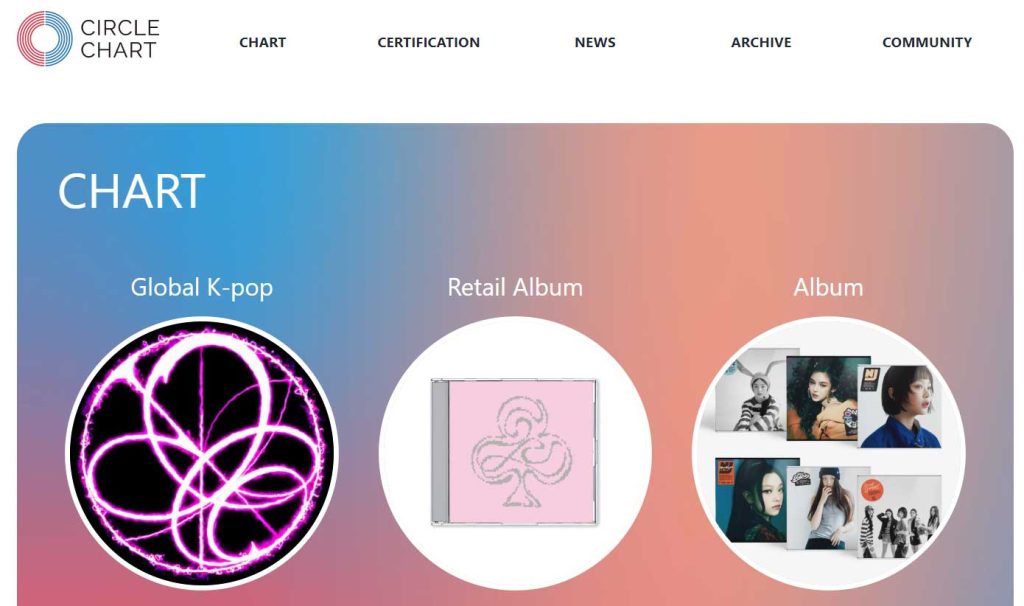Your basket is currently empty!
How Do Korean Music Charts Influence the K-pop Industry?
By
.

Introduction
In South Korea and worldwide, music charts are essential for tracking the popularity and success of songs and albums. Sales, streams, and viewer engagements influence music charts and rankings. In this vibrant scene, numerous charts stand as indicators of what is currently hitting the high notes in the country. Whether you’re a K-pop fan or a casual listener, understanding these charts can deepen your appreciation of this dynamic music genre. Get ready to dive into the details of the biggest Korean music charts and discover which tunes are captivating fans across the globe!
Table of Contents
Overview of Korean Music Charts

Image courtesy: Unsplash
Korean music charts are a vital part of the music scene in South Korea, offering detailed insights into what’s popular in the realm of K-Pop and beyond. These charts not only guide fans to what’s trending but also influence the promotional strategies of record labels and artists. Let’s see which major music charts dominate this vibrant K-pop landscape.
Circle Chart
Formerly known as the Gaon Chart, the Circle Chart is considered the definitive source for music rankings in South Korea. This chart is extensively noted for its comprehensive data across various categories, including digital sales, physical album sales, streaming, and more. It compiles weekly, monthly, and yearly charts, providing a panoramic view of the music trends in Korea.
Hanteo Chart
The Hanteo Chart is critical for anyone interested in the real-time popularity of K-Pop music. What sets it apart, is its daily update feature, tracking sales by the hour. This immediacy makes Hanteo highly valuable, particularly during an artist’s initial release period. It’s a key metric for gauging a song’s immediate hit potential and fan engagement.
Melon Chart
Melon is one of South Korea’s leading music streaming services, and its chart is a prestigious indicator of a song’s success within the country. The Melon Chart calculates its rankings based on streaming and downloads, reflecting current musical trends and public tastes. It’s a primary resource for music fans who want to stay updated with the hottest tracks.
South Korea Songs Chart
The South Korea Songs Chart, more widely referenced by its Spotify ranking, tracks the popularity of songs on one of the world’s largest streaming platforms. Updated regularly, this chart gives insights into what the global K-Pop fan community is listening to, as well as domestic listeners, capturing a diverse range of musical preferences and inclinations.
Factors Influencing Korean Music Charts
Several elements influence the positioning of songs and albums on the Korean music charts. These factors include music quality and artist popularity but also strategic release timings and various modes of consumption. Understanding these can help fans and newcomers make sense of the fluctuations and trends evident in the Korean music industry.
Digital Sales
Digital sales primarily include downloads from online music stores. In South Korea, these sales are a significant indicator of a song’s popularity and commercial success. Chart placements are greatly affected by how often a track is purchased digitally, showing an expressed preference for the song among consumers. This model benefits artists with a strong online presence and a digitally savoury fan base.
Physical Album Sales
While the global music market has moved largely towards digital, physical album sales remain a robust marker of popularity and fan loyalty in K-Pop. These sales include CDs, vinyl, and other physical media. High physical sales not only influence music charts like Hanteo, but also reflect the tangible connection fans feel towards their favourite artists, often boosted by collectable items included in album packages.
Streaming
Streaming is perhaps the most dynamic indicator of song popularity, considering the widespread adoption of platforms like Melon, Spotify, and Apple Music. It reflects not just initial interest but sustained likability and listening. Longevity on streaming charts tends to denote tracks that resonate deeply with the audience, often outliving the explosive but short-lived spikes seen in digital sales.
By understanding these chart systems and the factors that influence them, fans and industry insiders can gain a clearer picture of the flow of music popularity in Korea. Whether it’s the real-time rush of the Hanteo Chart or the long-term trends observed on the Circle Chart, each metric offers unique insights into the vibrant world of K-Pop and its ever-changing landscape.
Popular K-Pop Songs on Korean Music Charts

Recent Hits
- Supernova – aespa
- How Sweet– Newjeans
- Bubble Gum – Newjeans
- HEYA – IVE
- Jimin – Like Crazy
- ILLIT – Magnetic
- SPOT! (feat. JENNIE) -ZICO
- T.B.H – QWER
- Addiction to worry – QWER
- Shower – ECLIPSE
All-Time Classics
K-Pop is not just about the latest hits but also about the timeless classics that have shaped the genre. Psy’s “Gangnam Style” is undeniably an all-time classic that brought K-Pop into the global spotlight with its viral dance moves and catchy tune. Another classic, BIGBANG’s “Fantastic Baby,” is famed for its energetic vibe and remains a favourite at concerts and parties.
Girls’ Generation’s “Gee” also holds a special place in the hearts of many K-pop fans, noted for its catchy melody and the group’s synchronized dance moves. Super Junior’s “Sorry, Sorry” and SHINee’s “Ring Ding Dong” are other classics that not only charted impressively in South Korea but also won various music awards, cementing their places in K-Pop history.
These tracks laid the groundwork for the modern evolution of K-pop and continue to influence artists and fans alike.
Emerging Trends in K-Pop
Sound Evolution
In recent years, K-pop has seen a remarkable evolution in its sound, merging various genres to create something uniquely appealing. Modern K-pop tracks often feature a mix of hip-hop, EDM, pop, and R&B, exemplified by groups like Stray Kids and NCT. The incorporation of different genres helps to keep the music fresh and exciting, ensuring that K-pop remains at the forefront of global music trends.
Additionally, the use of advanced production techniques and high-quality sound engineering contributes to the distinctive sound of K-Pop, making it stand out from other music industries. Innovations such as mixing, mastering, and sound design play a crucial role in the evolution of K-pop’s sound, pushing its popularity even further on international stages.
Global Collaborations
Global collaborations have become a significant trend in K-pop, opening up new avenues for exposure and artistic exchange. K-pop artists increasingly collaborate with international musicians, which not only helps in expanding their global fan bases but also introduces K-pop to diverse audiences. For instance, BTS’s collaborations with artists like Halsey and Coldplay have produced chart-topping hits that were both critically acclaimed and commercially successful.
These collaborations often blend different cultures and musical styles, creating innovative and exciting tracks that appeal to a broad audience. Additionally, these partnerships are a testament to the growing influence of K-pop across the world and its integration into mainstream music.
Social Media Impact
Social media plays a pivotal role in the promotion and success of K-pop music. Artists and groups leverage platforms like YouTube, Instagram, and Twitter not just for promotion but also to engage with fans directly and build global communities. BLACKPINK, for instance, has used YouTube effectively to reach audiences worldwide, with their music videos garnering billions of views.
The impact of social media is also evident in how K-pop fans use these platforms to support their favourite artists. Trends like streaming parties and hashtag events help increase visibility and influence song rankings on digital charts. Furthermore, social media allows for the viral spread of K-pop content, including music videos, dance practices, and live performances, which significantly contributes to the genre’s global appeal and the chart success of its songs.
Through these emerging trends, K-pop continues to innovate and adapt, ensuring its place not just in Korean music charts but also in global music culture.
Impact of Korean Music Charts on the K-pop Industry

The Korean music charts not only reflect current musical trends but also significantly influence the K-Pop industry. These charts are pivotal in shaping the careers of artists and the overall dynamics of the music market in South Korea.
Chart Performance and Artist Popularity
One of the most direct impacts of Korean music charts is on the popularity and visibility of K-pop artists and their music. Charting well can lead to various opportunities for artists, including endorsements, invitations to high-profile events, and increased media exposure. When a K-pop song hits the top of the charts, it often leads to viral sensations, attracting attention from both national and international audiences. This surge in popularity can be crucial for new artists or comebacks by established artists.
For example, achieving a top position on major music charts like the Circle Chart or Melon Chart can dramatically increase an artist’s recognition and validate their status in the competitive K-pop industry. This recognition often translates into tangible benefits such as increased album sales, more streams, and larger fanbases.
Influence on Music Production
The trends reflected in the Korean music charts also heavily influence the production of K-P critics and producers closely monitor these trends to align their artistic direction and production choices with the preferences of the mass audience. This trend-driven production can lead to a higher rate of hits, as songs are tailor-made to satisfy current musical tastes.
– Trend Adoption: Producers and songwriters analyze chart-topping tracks to identify successful elements they can incorporate into their projects.
– Genre Variations: Charts influence shifts in genre popularity, guiding producers on whether to explore more of certain styles such as hip hop, ballads, or EDM.
These factors contribute to a dynamic musical landscape where change is constant, driven by the feedback loop between chart performance and music production.
Setting Industry Benchmarks
Korean music charts also play a crucial role in setting benchmarks within the industry. Success on these charts sets a standard to which all artists aspire.
Awards and Recognition: Many music awards shows in South Korea use chart performance as criteria for nominations and winners. This highlights the importance of the charts in not only recognizing talent but also in shaping the careers of artists.
Contract Negotiations and Endorsements: Artists who perform well on the charts often have an upper hand in contract negotiations and are more likely to secure lucrative endorsement deals.
In conclusion, the impact of Korean music charts on the K-pop industry is profound. They not only mirror what is popular but also shape what will be popular by influencing music production, setting industry benchmarks, and enhancing or solidifying the popularity of K-pop artists. As K-pop continues to captivate global audiences, the role of these music charts is likely to grow, reinforcing their importance in the global musical landscape.
Conclusion
The landscape of Korean music charts is as dynamic as the genre itself. These charts not only highlight the most popular K-pop songs at any given moment but also reflect the changing tastes and trends within the music industry in South Korea. Circle Chart, Hanteo Chart, Melon Chart, and South Korea Songs Chart among others, offer not just rankings but a cultural snapshot, making them essential for any K-pop enthusiast looking to stay updated with the latest hits and trends. Whether you’re a fan, an artist, or just curious about K-pop, keeping an eye on these charts can greatly enhance your understanding and appreciation of Korean music.

